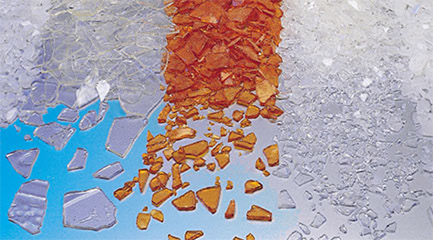This solidification system is based on our proven steel belt cooler, a versatile system that can be adapted to meet specific process requirements such as product thickness, temperature profile or processing times.
Simple, reliable and environmentally friendly
The molten product is delivered onto the steel belt via feed device, forming a film that is taken up by the running steel belt. Retaining strips of Neoprene or rubber prevent the product from spilling over the edge of the steel belt.
The steel belt is sprayed on the underside with water from nozzles carefully positioned to ensure uniform cooling, resulting in controlled and even solidification. The heat released during cooling and solidification is eliminated through the steel belt with its excellent thermal conductivity.
The cooling water is collected in tanks and drained through an integral collecting pipe. There is no contact between the coolant and product, so there is no risk of cross contamination.
At the cooler end, a crusher breaks the solid product layer into small irregular flakes. The breaker is individually designed according to product type, the flake size required and the capacity of the plant. After leaving the crusher, the flakes are fed into a chute for further processing.
- Good operability/accessibility
- Economical operation with low maintenance costs
- Variable product thickness
- Zoned cooling allows product-specific temperature profiles
- Non-polluting
Double belt systems
For high capacity operations, or where floor space is limited, we also offer a double belt system in which the product is cooled from above as well as from below. In many installations, this type of system provides significant commercial advantage.
Furthermore, as some types of waxes and resins tend to curl away from a single belt unit, resulting in irregular cooling and loss of capacity, the double belt system can be used to handle these products more efficiently. It is also possible to cool thicker products to a uniform temperature over the whole cross section.
The double belt system also helps to reduce vapours and fumes and to keep them from the operating area.

